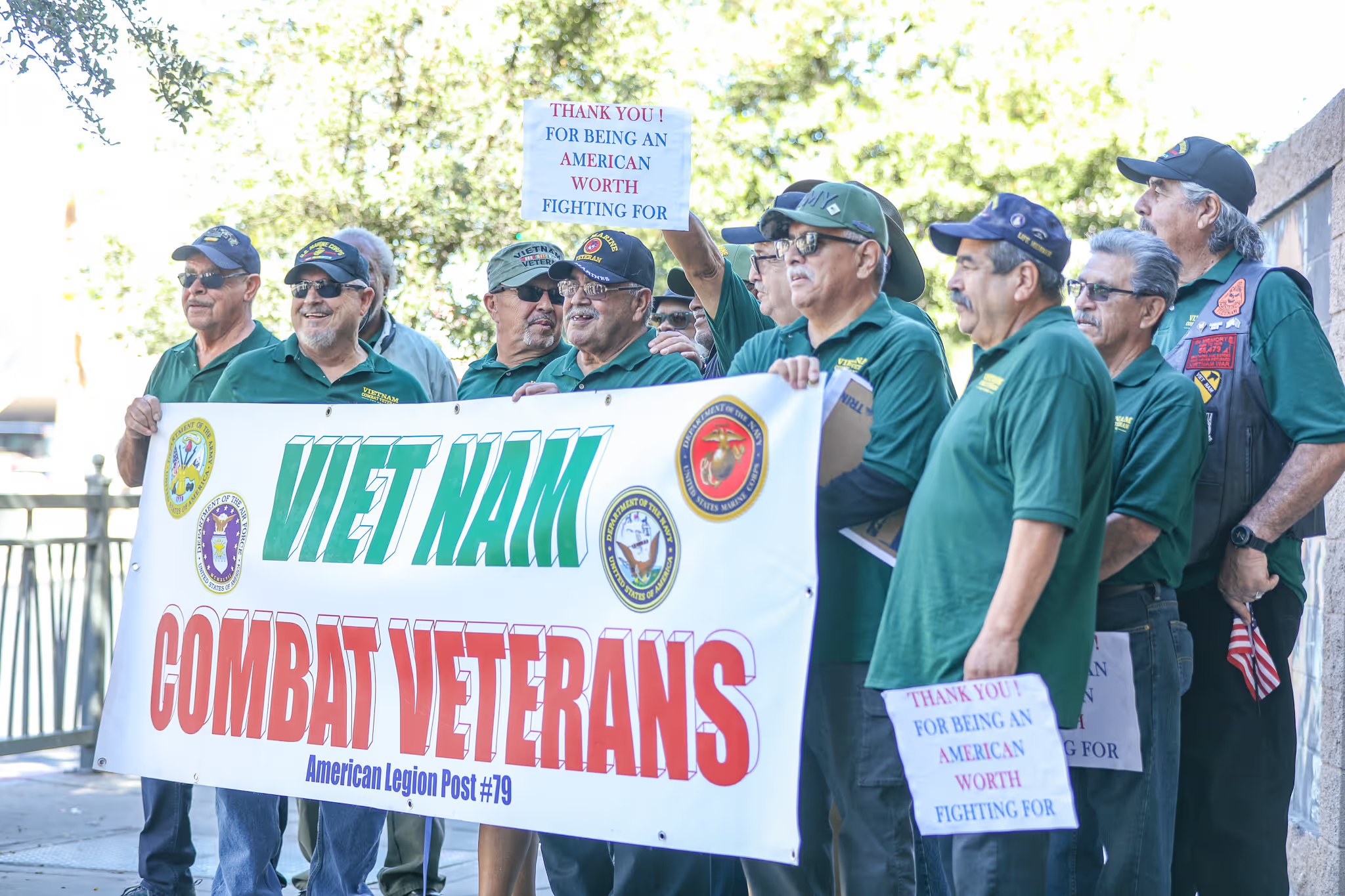It is important to understand the unique experiences and risks of specific demographic groups of veterans, and how these experiences may influence their well-being and their communication with healthcare providers.
WOMEN VETERANS HEALTH
At present, women represent 9 percent of the veteran population, but the percentage is increasing exponentially, and by 2045 is expected to double to nearly 18 percent. Unfortunately, their status as veterans is often overlooked and many women will not necessarily identify themselves as veterans. Often, healthcare providers are likely to assume women have not been in the military.
We know that women’s roles in the military have converged with those of men and therefore it is important that you ask your women patients or clients if they have served in the military because they may—like their male counterparts—have specific service-connected physical health risks and exposures that you may not see in nonveteran women.
It is also important to understand that the battle lines during the current wars are less clearly defined and women have been very likely to engage in combat regardless of their official role. Do not forget that the first US soldiers who were taken captive at the onset of the US war in Iraq were women.
Women veterans tend to have poorer health status than veteran men and nonveteran women:
- Women ages 45-64 are the largest group of women who seek healthcare at the VA.
- The top health conditions found in this group in 2015 included hypertension, overweight/obesity, and joint and spine disorders.
- Musculoskeletal injuries are also common as many wore equipment not designed for female bodies.
- Approximately 43 percent of women veterans treated at the VA in 2010 had at least one reproductive health diagnosis. Research suggests that menstrual disorders and endometriosis are the most common reproductive health outcomes diagnosed in women veterans ages 18–44 who seek care at the VA.
- Younger women who have been deployed to inhospitable conditions may be particularly at risk for poor reproductive health in light of unsanitary conditions or exposures to stressors.
- Post-9/11 women veterans are also more likely to have experienced infertility than their male counterparts, are at increased risk of preterm birth in women if they deployed, and research suggests that PTSD is associated with gestational diabetes and pre-eclampsia.
- Women veterans who have experienced sexual assault have an increased risk of sexually transmitted infections (STI), infertility, pelvic pain, menstrual problems, back pain, gastrointestinal symptoms, chronic fatigue, obesity, and hypothyroidism.
- Smoking, obesity, and a sedentary lifestyle brought on by the stress associated with military sexual assault have been found to be a risk for cardiovascular diseases.
- Women fare worse than men in terms of mental health conditions as a result of traumatic brain injury. A recently published review found a higher rate of neurobehavioral symptoms and depression diagnoses in women veterans with mild TBI (mTBI).
- Women with TBI are much more likely to experience homelessness.
Recommended Reading: Women Veteran Screening Guide
A guide across all sectors to identify women veterans within their organization, better understand the issues they face, and create strategies for more effective care.
LGBTQ+ VETERANS HEALTH
There are approximately one million US veterans who identify as LGBTQ+. As we have learned, not all veterans will self-identify, yet this reluctance to disclose applies even more to your veteran patients or clients who are LBGTQ+.
LGBTQ+ veterans have not only experienced stigmatization, marginalization, and discrimination within the general population, but have the added burden of facing these attitudes within the military and/or veteran populations and fear of a less than honorable discharge because of historic bans on LGBTQ+ serving in the military.
LGBTQ+ veterans have also faced what some have called the “Double Closet,” which is a reluctance to identify as LGBTQ+ among the larger veteran community, and a reluctance to identify as a veteran in the LGBTQ+ community because of expected or experienced hostility. These factors have contributed to generally poorer health in LGBTQ+ veterans compared to other veterans.
There are a number of barriers to LGBTQ+ seeking VA healthcare:
- They may have felt compelled to conceal their sexual orientation while in the military and have been afraid that disclosing their identity could lead to disciplinary actions, harassment, and violent attacks during military service. Thus, they can leave the military still burdened by these conflicts and this may create a barrier to seeking VA healthcare.
- LGBTQ+ veterans may regard the VA to be an unwelcoming place that is not sensitive to their needs.
- LGBTQ+ veterans who identify as women, are more likely to have been targets of harassment by male veterans or generally feel unwelcome or unsafe at a VA healthcare facility. Consequently, they are more likely to delay seeking healthcare or avoided it completely.
- LGBTQ+ veterans may have been discharged with less than honorable discharges based on sexual orientation or identity, and thus denied VA care and benefits. Note: These barriers may be overcome through discharge review and VA claims processes.
Of course, LGBTQ+ veterans also have many of the same physical health risks as their cishet (those who identify as cisgender and heterosexual) counterparts, though LGBTQ+ have unique mental health risks.
Technically, transgender veterans have access to all medically necessary services at the VA other than gender confirmation surgery, but their military experiences may have left scars that are barriers to seeking care at the VA. There has been progress made in military and VA culture, including repeal of DADT and the transgender ban as well as LGBTQ+ clinics and specialized care at some VA medical centers. We hope to see improvements in data collection, culture-informed care among providers, and in health-seeking behavior, access, and outcomes.
AGING VETERANS HEALTH
In the next decade as veterans age, we will see a continued increase in the prevalence of several common health conditions, including diabetes, ischemic heart disease, hypertension, and mental health disorders.
Researchers have estimated that there will be 423,000 new dementia cases including Alzheimer’s in veterans by the end of this decade. Older veterans with PTSD symptoms are more likely to experience poor general health including cardiovascular disease, diabetes, gastrointestinal disease, fibromyalgia, chronic fatigue syndrome, musculoskeletal disorders, and autoimmune disease.
The severity of health conditions will also likely increase, based on what we know about current trends, particularly in veterans that have experienced chronic homelessness and poverty and who suffer from physical and mental frailties beyond their age—much of which has resulted from their military service. In addition, age-related health problems that we see in nonveterans can manifest ten years earlier in low-income and homeless veterans due to economic and housing insecurity, chronic stress, and decreased inadequate access to the healthcare system.
- Sixty-eight percent of all veterans are age 55 and over.
- Twenty-two percent of Vietnam veterans, who have an average age of 68, claim a service-connected disability.
- More than half of veterans who experience homelessness are over 51, and the number of veterans over 62 experiencing homelessness increased by 54 percent from 2009 and 2015, in large part due to the increase in homelessness among those veterans over age 62.
- Despite the increased numbers of veterans using VA benefits, only 40 percent of Vietnam veterans use VA healthcare; the majority seek care from community systems. In some instances, this is due to unwillingness to use VA healthcare. However, in many others, this is because too many veterans do not qualify for VA benefits based on their discharge status.
- Older veterans are at increased risk of suicide; two-thirds of veterans who complete suicide are age 50 or older.
It is important to understand that as veterans age they may also be at higher risk for a TBI distinct from their risks for TBI during military service. In older veterans and nonveterans alike, TBIs are often the result of falls and can exacerbate aging-related disability. However, not only is exposure to Agent Orange a risk for dementia in Vietnam veterans—as described previously—veterans who have sustained a TBI have a higher risk of dementia as they age. In addition, autopsy research conducted on combat veterans and athletes has found an association between multiple TBIs and concussions and neurodegenerative disease such as chronic traumatic encephalopathy (CTE).
It is important to recognize that the progression in severity of previous service-connected conditions and subsequent secondary conditions can create eligibility for increased disability compensation and health supports for veteran clients and patients.
Listen to housing and social service providers discuss the isolation and community, ADL, and habitability needs of aging veterans









